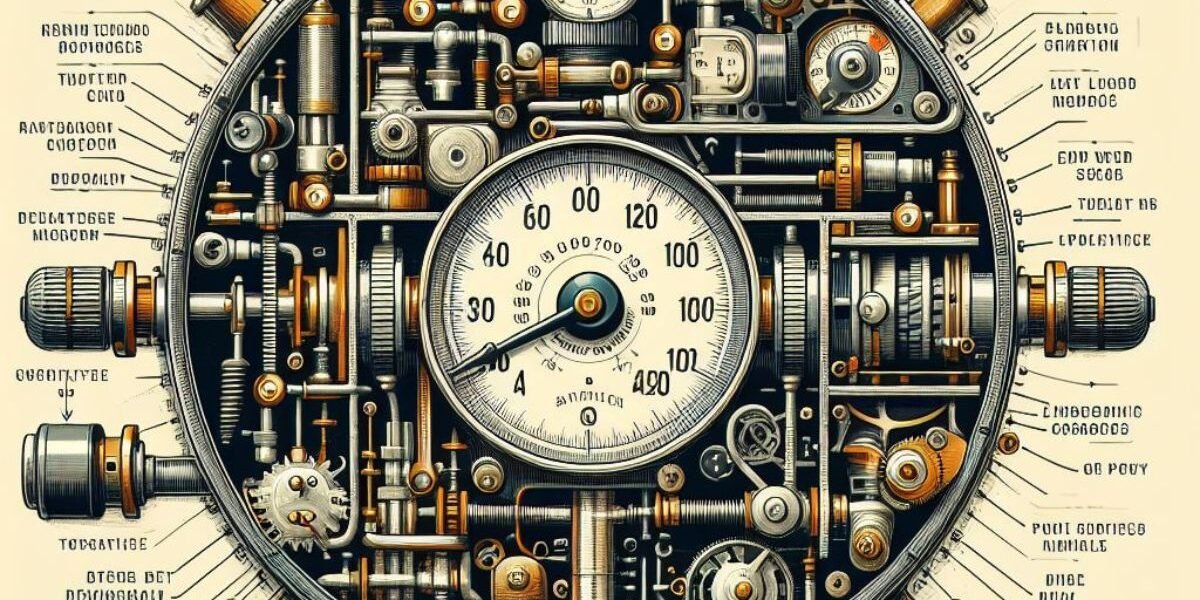How does a Boat Speedometer Work?
A boat speedometer, also known as a speedo, works by measuring the speed of a boat as it moves through the water.
The speedometer on a boat typically consists of a gauge located on the dashboard that displays the speed of the boat in miles per hour.
Using a pitometer or manual pitot tube speedometer, the water pressure behind the boat’s hull is measured so as to calculate its speed.
Similar to car’s speedometer, but instead of measuring the speed of wheels it measures the speed with which water passes around the boat.
There are some boats that are equipped with GPS-driven speedometers.
Different types of speedometers can be found by boat owners in boating forums such as IBoats Boating Forums where there are electric paddle wheel and pitometer speedometers.
Pitometer Speedometer, which is one popular kind of a boat’s velocity meter, has a tube that is attached to its hull.
It works by having the tube collect water whenever the boat moves and then uses this amount of water pressure in determining how fast or slow it goes on waters.
Electric paddle wheel, another type of a speedometer counts how many times a wheel running inside water revolves to indicate how quickly that boat is moving.
Both these types of instruments provide an operator with an accurate reading about his/her own vessel’s pace. It helps them monitor their pace thereby adjusting accordingly during boating.
What is a Boat Speedometer?

A speedometer on a boat is one of the devices needed even if it’s just a traditional or modern pontoon.
It determines the speed of your boat through an impeller positioned at the lower unit of the boat.
Usually, it’s just a little drill bit that measures water pressure while passing from the boat.
This data is then relayed to the speedometer located on the console of boat and displayed in miles per hour.
The air pressure at the bottom of a boat is what electromagnetic field-based speedometers measure in order to determine its velocity too.
To ensure your accuracy, you need to maintain and calibrate your boat’s speedometer well since this can affect reading especially when there is any clog or damage occurred by impellers.
Definition and Function of a Boat Speedometer
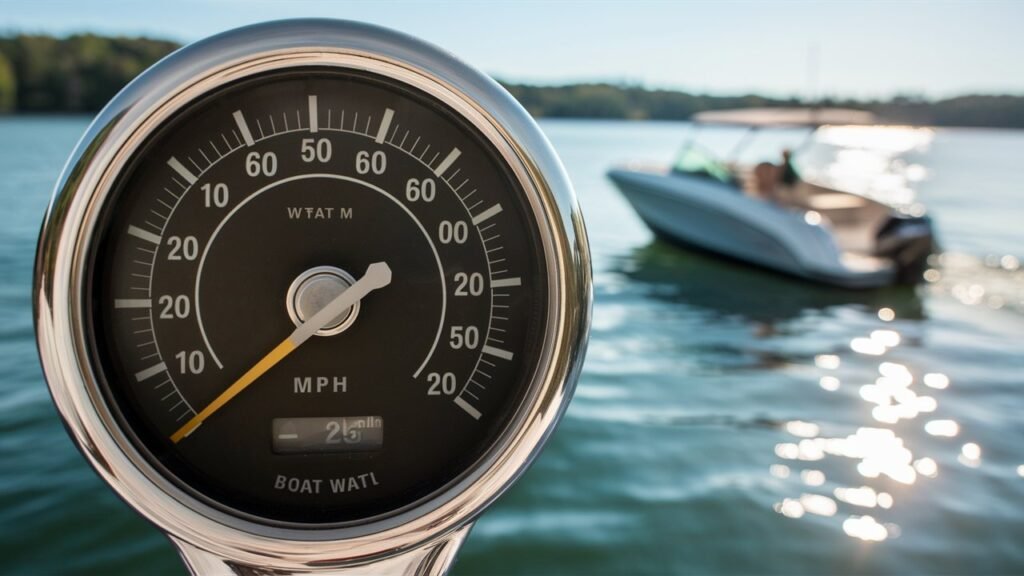
Boat Speedometer Definition and Function A boat speedometer calculates the number of feet per minute a boat is travelling.
It looks like a car speedometer except, instead of measuring land based vehicle’s motion, it measures water borne vessels’ motion.
The regular boat speedometer uses pitot tube to calculate speed over time.
There are two holes in this tube – one at the tip as it is supposed to be and another at the back of the boat.
By placing it in water, as the vessel moves ahead, the force of the water results into an electric field so that its magnitude can indicate how fast it is going.
In older boats, there could be a small opening where you will find the speedometer positioned at the end of this tube.
To ensure that your device blows out only accurate information about your velocity, always check its calibration regularly.
Some newer boats such as Yamaha may have digital components on your boat for improved performance while using a speedometer.
Types of Boat Speedometers
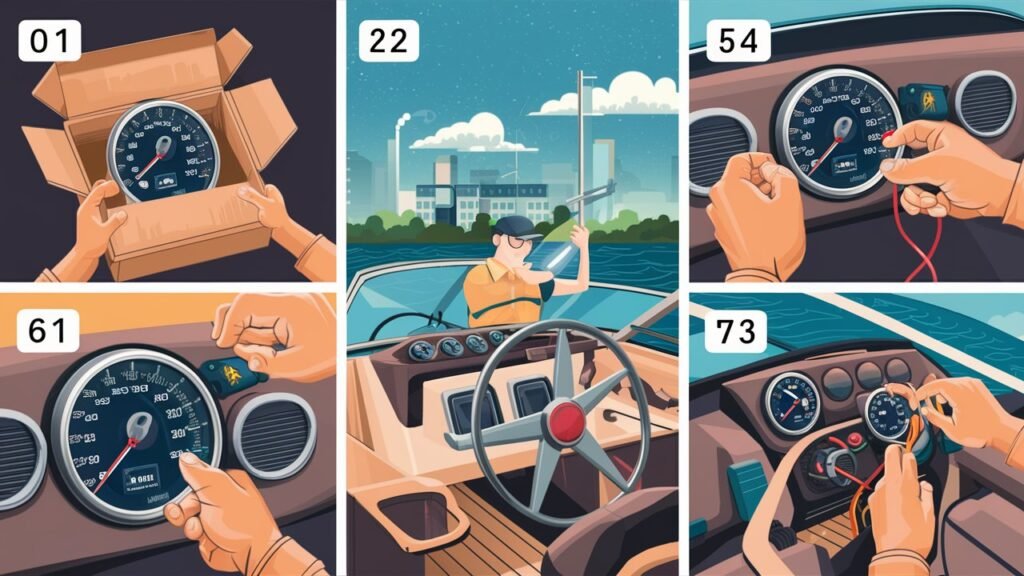
Types of Boat Speedometers
Speedometers for boats vary in types and are used to gauge the speed of watercrafts.
One of the commonly used speedometers is Pitometer which works by gauging water momentum into tubes through a small hole at its front end.
The sensing device has two holes on the tube that measure both water and air velocities within.
This measurement of how fast someone is going is important to boat enthusiasts who know how many nautical miles per hour they are traveling.
Before you install, make sure that your browser has JavaScript enabled if you want boat’s Speedometer to work well.
If it does not enable JavaScript then you might go online and buy another sensor of a speedometer which will give you accurate readings about how fast your boat moves.
Importance of a Boat Speedometer
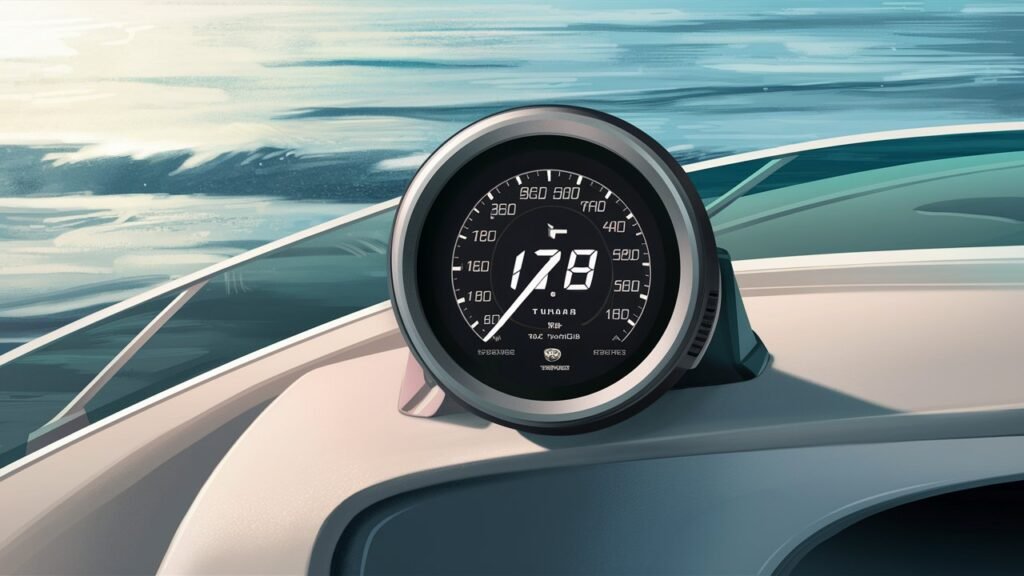
Boat speedometers are essential tools for boaters to accurately measure boat speed while out on the water.
By providing real-time data on how fast a boat is travelling, speedometers help boaters navigate safely and efficiently.
Many waterways have speed limits in place to ensure the safety of all watercraft, and a speedometer allows boaters to comply with these regulations.
The speedometer operates by having a sensor that detects the spinning of a coil going through the magnetic field, which acts as an indicator of velocity.
Another name given to this device is pitometer, and it uses water flow below the hull to give an accurate measurement of a boat’s speed.
Boaters would be at risk if they did not have working speedometers because they would have to depend on guesses concerning their speeds on water.
How Does a Boat Speedometer Measure Speed?
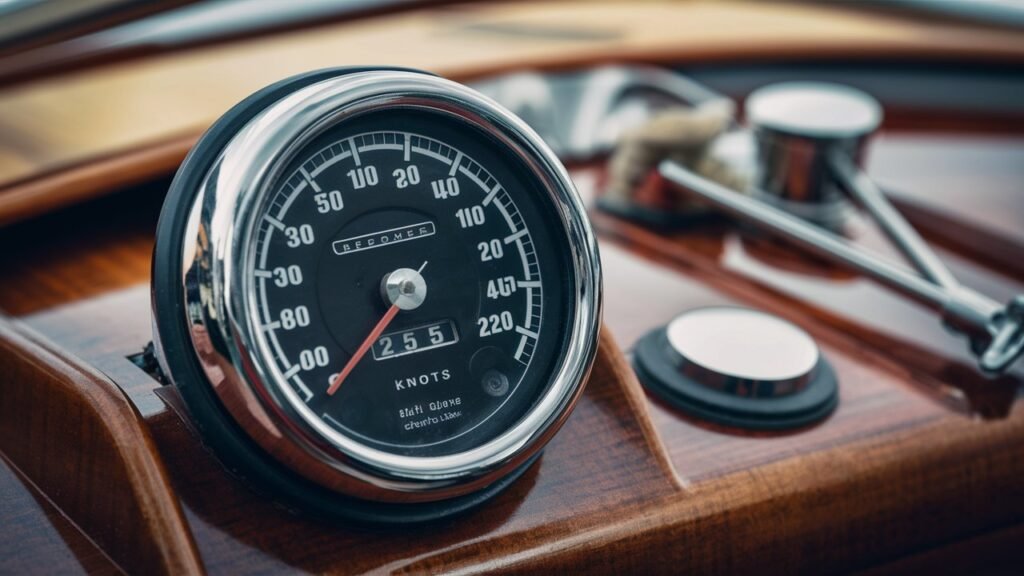
Boat speedometers, which work using a device known as pitometer, utilize paddles or impellers in order to gauge boats’ water velocity.
The spinning of the paddlewheel as it moves forward signals that can be converted into speed reading on the speedometer is one way of moving.
For instance, this information may be displayed in terms of miles per hour or knots depending on individual’s preference.
To add on this idea, I would like to inform you that accuracy of this instrument depends on several factors such as the type of paddle wheel used, water condition and calibration.
Thus boat speedometers provide live data about the boats’ velocity so that their operators could keep up with an acceptable rate whilst cruising.
Working Principle of Boat Speedometers
To function, boat speedometers depend on the measurement of how fast a boat is moving through the water.
Most of these devices employ a paddle wheel or pitot tube as their speed measuring elements.
At the bottom of every boat, a paddlewheel is placed to sense any slightest motion that could occur in its forward movement flow.
The revolving paddle wheel can then be translated into a speed reading and displayed by the speedometer.
Similarly, pitot tubes can convert this pressure into a general indication of velocity at which it moves through the fluid medium.
Thus, both types of speedometers work based on the fact that they follow the course along which an item is moving in relation to water. This is essential for enabling correct computation of the speeds when using such instruments.
Calibration entails setting it so that it gives correct readings.
Common Problems with Boat Speedometers
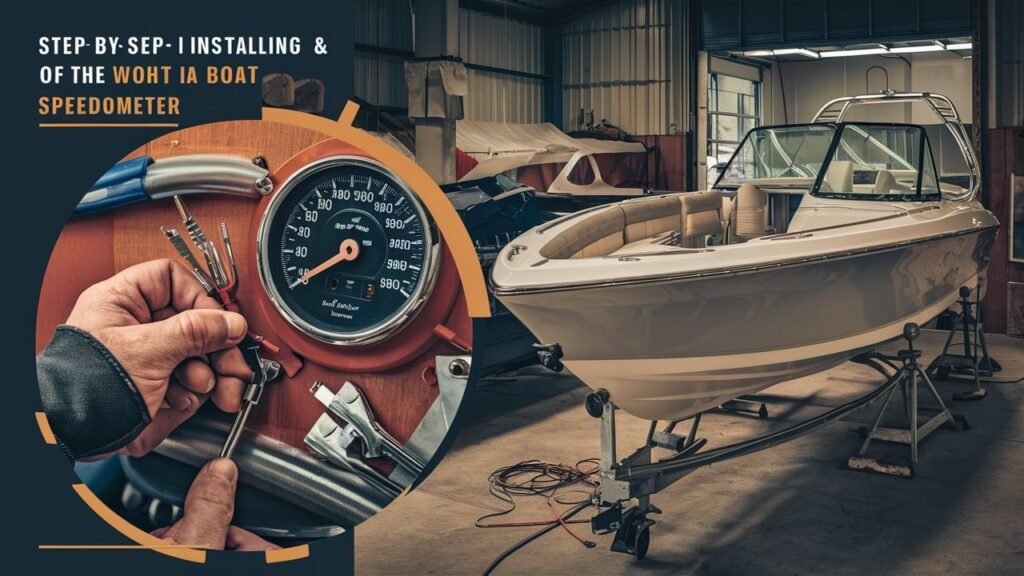
Concerning speedometers of boats, there are a number of usual issues that can be met by boat owners.
The most repeated problem is a speedometer working poorly due to a bad sensor.
This results in inaccurate readings or none at all. Another common problem is mistakes in calibration happening when the speedometer set up does not match the specifications of the boat.
In addition, obstructions in the speedometer tube may also render wrong readings.
Lastly, if there are problems with the functionality of electrical system of the vessel, then some speedometers do not perform optimally.
To prevent these problems from occurring, it is essential to regularly examine and maintain the unit while ensuring that its electrical components are performing properly.
Reasons for a Speedometer Stopping Working
Speedometer going off while driving can result from a number of factors.
One normal factor is the speed sensor that measures the car’s speed to feed it to the speedometer.
Should this device be faulty, then the speedometer will not indicate rightly or stop working generally.
A blown fuse might be another possible cause because if it does not have power, it will therefore not work. At other times, however, an instrument cluster may be defective or a wiring problem could exist.
Also, calibration problems or damage to the cable of a speedometer can render them inoperative.
This is important as incorrect readings shown by a damaged speedometer can compromise safety on the road.
If your speedometer stops working, be sure to have it checked by a professional to determine the cause and make any necessary repairs.
How to Troubleshoot a Boat Speedometer
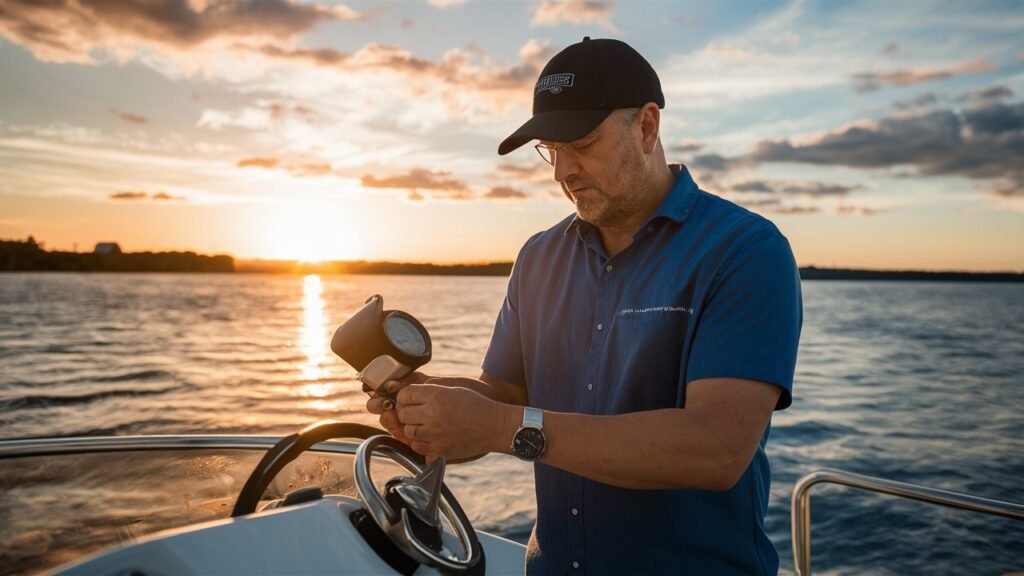
Please activate the javascript on your boat’s speedometer display to ascertain that it is functioning properly.
This will make sure that you get correct readings from a speedometer to measure your boat’s speed while you are sailing it in water.
If your speedometer does not show the correct boat’s speed, there are several troubleshooting steps that you can perform to rectify this problem.
Ensure connections secure and not damaged as one of these steps.
Furthermore, inspect pitot tube for clogs or blockages which may affect the accuracy of a speedometer reading.
Finally, compare GPS determined velocity with the constant velocity in case of failure of any other remedy.
Otherwise, seek further help from a professional marine expert.
Types of Boat Speed Sensors
Boat speed sensors are crucial gadgets that are used to measure the rate of progress of a vessel in water.
Various sorts of boat speed sensors have been produced on the market, with each having its own features and advantages.
A typical example is pitot tube sensor, which uses pressure difference to calculate the speed of a boat. ‘
Other models include impeller sensor as it has been explained above, this device utilizes its rotor in order to determine how quickly the water moves past it.
Moreover, there are also GPS speed sensors for advanced users who need accurate positions and rates.
In addition, some boats use sonar speed sensors that emit sound waves to calculate their movement through water.
Ultimately, depending on what the boat owner wants and as well as on what kind of waters they intend to sail in, will dictate which type of boat velocity gauge to purchase.
Installing and Maintaining a Boat Speedometer

An individual only needs to have basic knowledge about the components and what they do when installing or operating a boat speedometer.
The initial step is attentively perusing through the manufacturer’s manual for accurate installation.
A pitot tube or paddle wheel, which measures water pressure or wheel spins, normally links the speedometer to it thereby indicating how fast the boat is moving.
Afterwards, affix the speedometer securely on the boat’s dashboard or console using appropriate mounting tools.
One should regularly carry out maintenance practices on a speedometer in order to ensure that it gives correct readings at all times.
By checking if there are any blockages within the pitot tube or paddle wheel; calibrating it where necessary; and cleaning its display screen by removing all forms of dirt particles as well as foreign matters, then one will have done a thorough maintenance practice on this device..
With these steps observed boat owners are assured an enjoyable boating experience with their well performing speedometers.
Proper Installation of a Boat Speedometer
The boat owner must be careful to ensure that the speedometer is properly mounted.
When installing a boat’s speedometer, the foremost thing a person has to do is to identify and decide on the position in the boat from where it can be seen by whoever will drive it.
As soon as one’s choice of position is made, drilling should follow so that the speedometer can be mounted safely.
The hole must be sealed tight so that water doesn’t get inside the boat.
After fixing, connect it with a speed sensor on your boat and calibrate it correctly for accurate readings.
Finally, check whether this instrument is working correctly before you start boating.
conclusion
To sum up, boat speedometers are essential equipment for those who operate boats as it informs them about the speed of their boats while navigating through water bodies.
There are different types of such devices including pitot tube sensors, electromagnetic sensors, and paddle wheel sensors that measure the boat speed accurately using different techniques. Still, it is very important to maintain the precision of boat speedometers for safe and efficient navigation.
These include proper installation, consistent calibration, and regular maintenance in order to guarantee accurate readings by the rate meters.
Consequently, by doing so , they can rely on their speedometers completely while passing through waterways thus leading to a smooth enjoyable boating experience.
